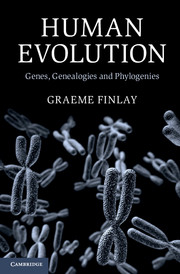1 - Retroviral genealogy
Published online by Cambridge University Press: 05 June 2014
Summary
I first became involved in cancer research in the early 1980s. It may seem presumptuous that a mere cancer cell biologist should write a book on the definitive evidence for biological evolution, at least as it pertains to our own species. However, it was a background in cancer research that provided useful perspectives – and the eureka moments – that enabled me to appreciate the force of the data arising from the field of comparative genomics. And one particular story led me inexorably from cancer biology into evolutionary biology.
The early eighties were heady times for cancer researchers. A revolution was taking place in our understanding of the genetic basis of cancer. Cancer-causing genes called oncogenes were discovered. Oncogenes were shown to be derived from normal genes (proto-oncogenes) that play vital roles in the regulation of cell proliferation, differentiation and death. During cancer development, proto-oncogenes are damaged by mutations, and their encoded proteins show increased expression, elevated activity and loss of sensitivity to negative regulation. The result is the disruption of cellular regulation and the acquisition of unrestrained patterns of growth. The products of oncogenes undergo gains of function that impel cancer development.
Concurrently, researchers identified a second class of genes as central players in cancer biology. These were called tumour suppressor genes (TSGs), and they were found to play essential roles in restricting cell proliferation and promoting differentiation under normal conditions. They act to counterbalance the effects of protooncogenes. Many TSGs are responsible for maintaining the integrity of the genome – often by detecting and repairing DNA damage.
- Type
- Chapter
- Information
- Human EvolutionGenes, Genealogies and Phylogenies, pp. 21 - 69Publisher: Cambridge University PressPrint publication year: 2013



